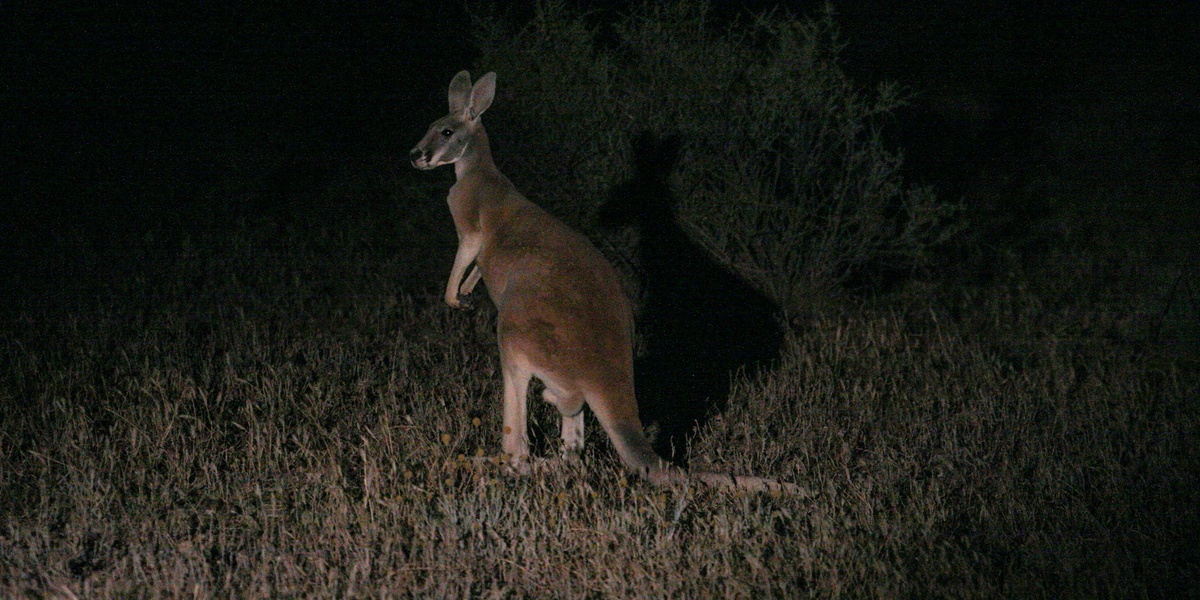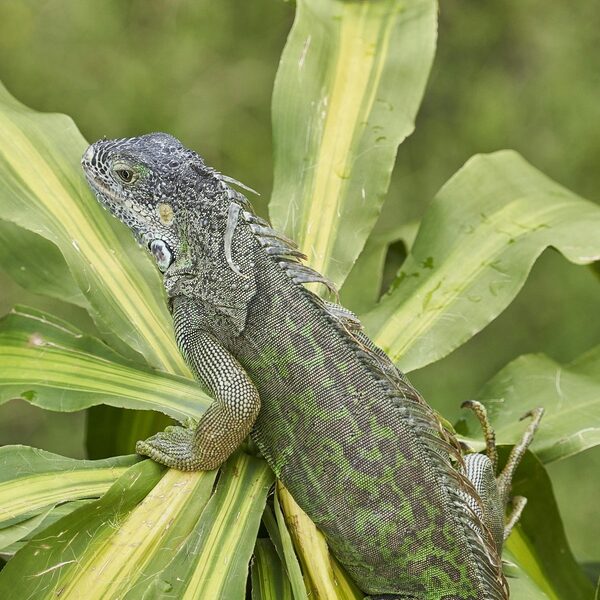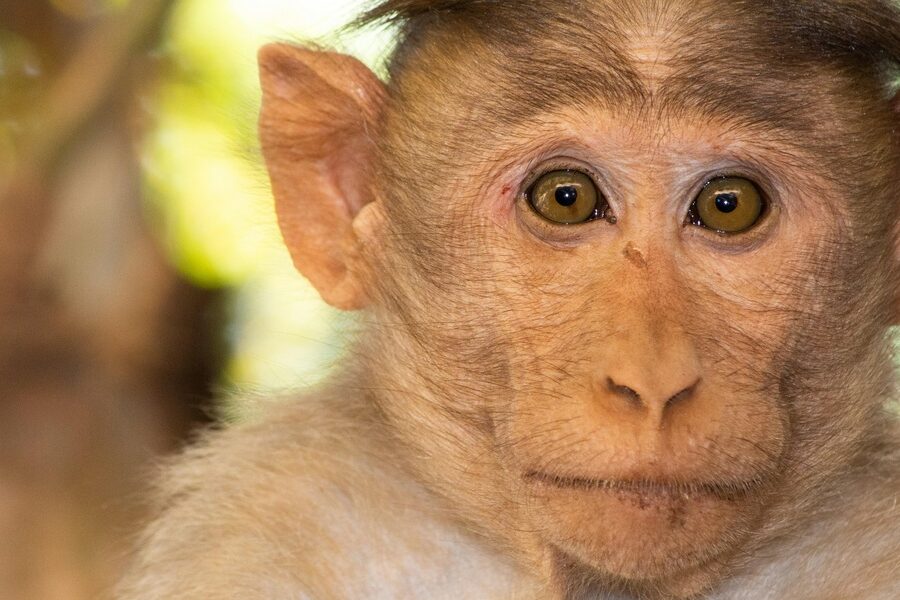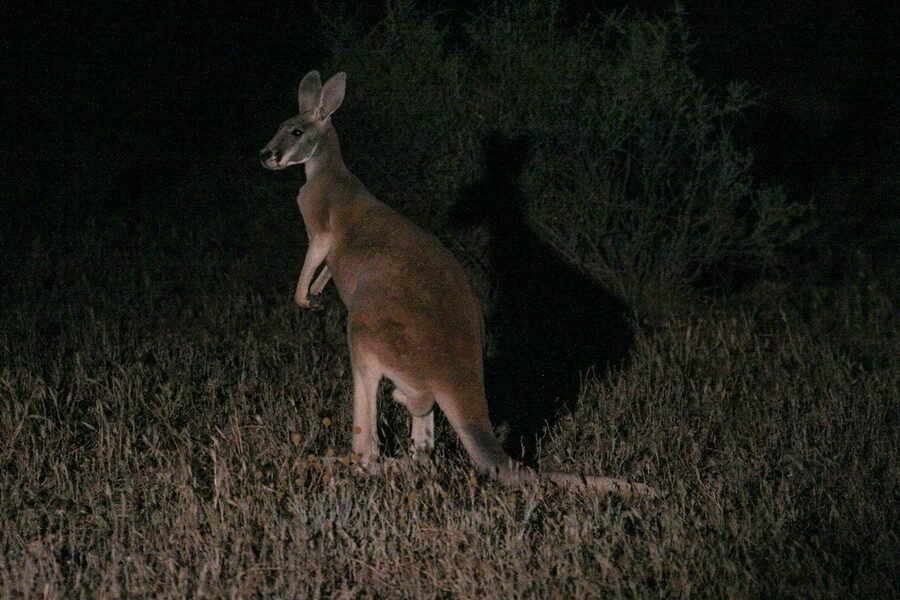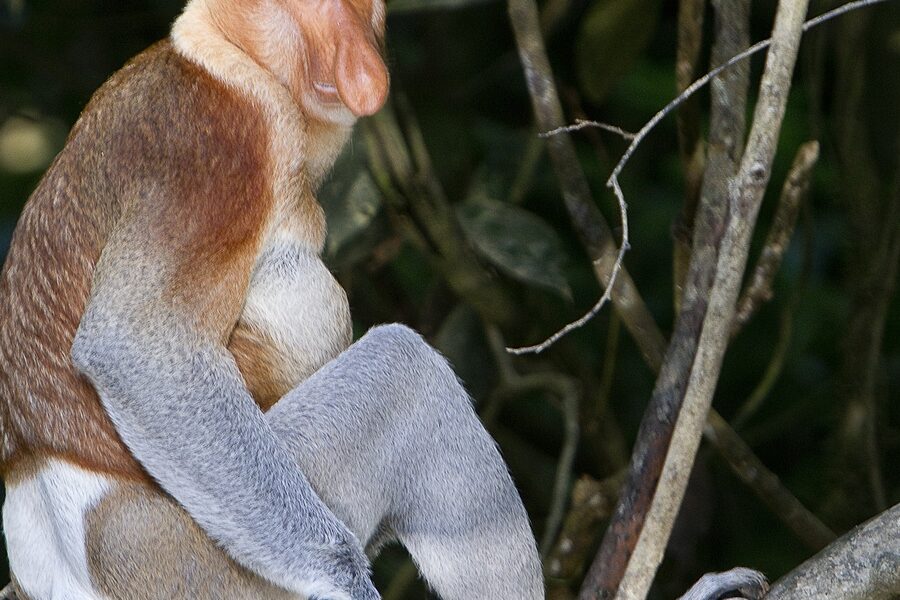Australia, New Zealand, New Guinea and the surrounding islands host a remarkable mix of wildlife shaped by long isolation, diverse climates and coastal ecosystems. From seabirds and marsupials to freshwater and reef species, the region’s animals reflect a wide range of evolutionary paths and habitats.
There are 45 Animals of Australasia, ranging from the Australasian gannet to the Western grey kangaroo. For each entry you’ll find below the columns: Scientific name, Typical size/weight (cm/kg), Range — presented so you can quickly compare appearance and distribution, and you’ll find below.
Which places are included when we talk about Australasian animals?
Australasia typically covers Australia, New Zealand, New Guinea and nearby Pacific islands; species in this list are native to or commonly found across those landmasses and adjacent coastal waters, so ranges reflect island-to-continental distributions and varied habitats like rainforest, grassland, desert and reef.
How should I use the size/weight and range columns to compare species?
Use the Typical size/weight (cm/kg) column for rough body-scale comparisons and the Range column to understand geographic context—together they help infer ecological roles (for example, a large terrestrial herbivore vs. a coastal seabird); remember values are typical averages, not absolute limits.
Animals of Australasia
| Name | Scientific name | Typical size/weight (cm/kg) | Range |
|---|---|---|---|
| Red kangaroo | Osphranter rufus | 55 kg | arid and central Australia |
| Eastern grey kangaroo | Macropus giganteus | 40 kg | eastern Australia, Tasmania margins |
| Western grey kangaroo | Macropus fuliginosus | 30 kg | southern and western Australia |
| Koala | Phascolarctos cinereus | 9 kg | eastern and southeastern Australia |
| Common wombat | Vombatus ursinus | 30 kg | southeastern Australia, Tasmania |
| Tasmanian devil | Sarcophilus harrisii | 8 kg | Tasmania |
| Quokka | Setonix brachyurus | 2.5 kg | Rottnest Island, southwestern Australia |
| Numbat | Myrmecobius fasciatus | 0.7 kg | southwestern Australia, small pockets |
| Platypus | Ornithorhynchus anatinus | 1 kg | eastern Australia, Tasmania |
| Short-beaked echidna | Tachyglossus aculeatus | 5 kg | throughout Australia, New Guinea |
| Sugar glider | Petaurus breviceps | 0.12 kg | eastern Australia, New Guinea |
| Common brushtail possum | Trichosurus vulpecula | 3.5 kg | throughout Australia, introduced elsewhere |
| Northern quoll | Dasyurus hallucatus | 1.2 kg | northern Australia, some islands |
| Spotted-tailed quoll | Dasyurus maculatus | 4 kg | eastern Australia, Tasmania |
| Emu | Dromaius novaehollandiae | 190 cm | throughout Australia |
| Southern cassowary | Casuarius casuarius | 170 cm | northeastern Australia, New Guinea |
| Laughing kookaburra | Dacelo novaeguineae | 45 cm | eastern and northern Australia, New Guinea fringes |
| Kakapo | Strigops habroptilus | 3.5 kg | New Zealand (endemic) |
| Kea | Nestor notabilis | 48 cm | South Island, New Zealand alpine zones |
| Tūī | Prosthemadera novaeseelandiae | 25 cm | New Zealand |
| Little penguin | Eudyptula minor | 33 cm | southern Australia, New Zealand coasts |
| Australasian gannet | Morus serrator | 80 cm | southern Australia, New Zealand coasts |
| Australian magpie | Gymnorhina tibicen | 45 cm | throughout Australia, parts of New Guinea |
| Superb fairywren | Malurus cyaneus | 14 cm | southeastern Australia |
| Saltwater crocodile | Crocodylus porosus | 450 cm | northern Australia, New Guinea, nearby islands |
| Freshwater crocodile | Crocodylus johnstoni | 280 cm | northern Australia rivers |
| Thorny devil | Moloch horridus | 20 cm | arid and semi-arid Australia |
| Frill-necked lizard | Chlamydosaurus kingii | 80 cm | northern Australia, New Guinea |
| Blue-tongued skink | Tiliqua scincoides | 45 cm | eastern and northern Australia, New Guinea |
| Green tree python | Morelia viridis | 180 cm | New Guinea, northern Australia fringe |
| Australian green tree frog | Litoria caerulea | 10 cm | northern and eastern Australia, New Guinea |
| Green and golden bell frog | Litoria aurea | 9 cm | eastern Australia, scattered areas |
| Southern corroboree frog | Pseudophryne corroboree | 3.5 cm | alpine bogs of southeastern Australia |
| Australian lungfish | Neoceratodus forsteri | 150 cm | southeast Queensland rivers |
| Murray cod | Maccullochella peelii | 120 cm | Murray–Darling Basin, southeastern Australia |
| Great white shark | Carcharodon carcharias | 400 cm | coastal Australia and New Zealand waters |
| Orange clownfish | Amphiprion percula | 11 cm | coral reefs of northern Australia, New Guinea, eastern Indonesia |
| Blue-ringed octopus | Hapalochlaena maculosa | 20 cm | southern and eastern Australia coastal waters |
| Sydney funnel-web spider | Atrax robustus | 3.5 cm | southeastern Australia, Sydney region |
| Box jellyfish | Chironex fleckeri | 30 cm | northern Australian coastal waters |
| Crown-of-thorns starfish | Acanthaster planci | 80 cm | coral reefs across northern Australia |
| Giant Gippsland earthworm | Megascolides australis | 300 cm | southeastern Victoria, Australia |
| New Zealand giant weta | Deinacrida heteracantha | 7 cm | Little Barrier Island, New Zealand |
| Humpback whale | Megaptera novaeangliae | 1,600 cm | coastal Australia, migratory to Antarctic feeding grounds |
| Southern right whale | Eubalaena australis | 1,400 cm | southern Australia, New Zealand coastal bays |
Images and Descriptions
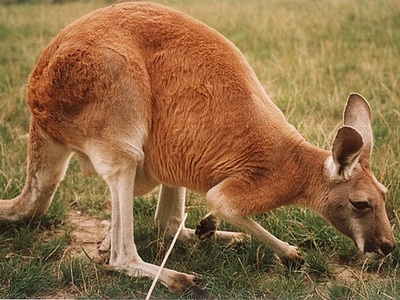
Red kangaroo
Large iconic marsupial of open plains and deserts, grazes and hops at speed, social in mobs. Notable for powerful hind legs, long tail for balance and ability to survive harsh, dry environments with water-efficient physiology.

Eastern grey kangaroo
Common woodland and grassland grazer reaching impressive leaps, often seen near farms and national parks. Social and adaptable, the eastern grey is notable for large groups, complex mating behaviors, and important ecological role as a browser.

Western grey kangaroo
Solidly built kangaroo of woodlands and scrub, more crepuscular than some relatives. Notable for shy behavior, grazing diet and regional importance; often confused with eastern greys but darker and stockier.

Koala
Arboreal folivore living in eucalyptus forests, sleeps long hours and eats mostly eucalyptus leaves. Iconic and vulnerable to habitat loss, koalas are notable for their specialised diet, low metabolic rate and strong cultural significance.
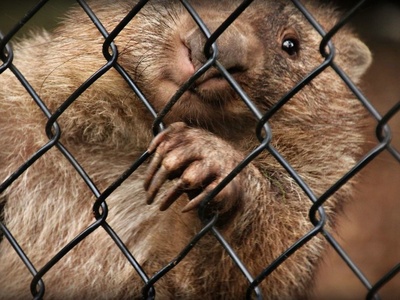
Common wombat
Stout, burrowing marsupial that digs extensive warrens and grazes on grasses. Notable for powerful digging claws, backward pouch to protect young from dirt, and a slow, tough nature adapted to cool temperate habitats.

Tasmanian devil
Small carnivorous marsupial known for loud screeches and powerful bite, scavenging and hunting nocturnally. Critically notable due to contagious facial tumour disease; intensive conservation and captive programs aim to save wild populations.

Quokka
Small, wallaby-like nocturnal browser famous for friendly appearance and “smiling” face. Endemic to limited islands and pockets of mainland, quokkas attract tourism and are notable as a conservation symbol of near-threatened status.
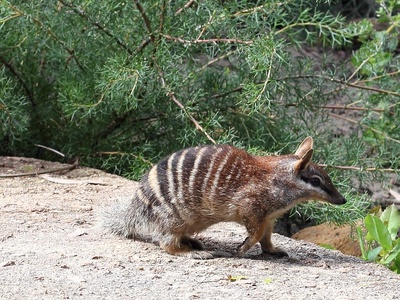
Numbat
Diurnal termite-eating marsupial with striking striped coat and long sticky tongue. Once widespread, now restricted and endangered; notable for specialized diet, diurnal habits and being a unique Myrmecobiidae family member.

Platypus
Egg-laying monotreme that forages aquatic insect larvae using electroreception in streams and rivers. Notable for duck-like bill, webbed feet, venomous spur in males and being one of only a few living egg-laying mammals.
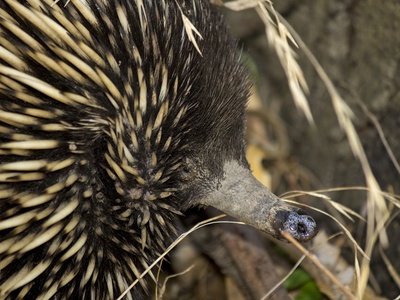
Short-beaked echidna
Spiny monotreme that feeds on ants and termites using long sticky tongue. Notable for egg-laying reproduction, strong digging ability and widespread adaptability across diverse habitats from deserts to forests.
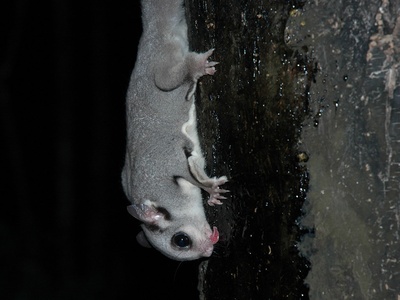
Sugar glider
Small nocturnal gliding possum that leaps between trees using a patagium. Social and vocal, they form family groups and are notable for gliding locomotion, arboreal diet, and popularity in ecological studies of social behavior.
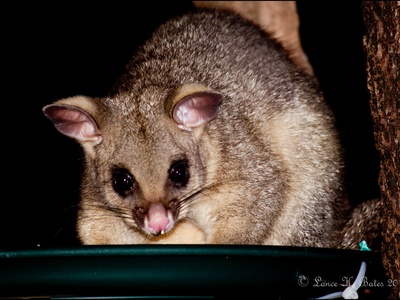
Common brushtail possum
Arboreal nocturnal marsupial adaptable to urban and forested areas, eats leaves and fruit. Notable for resilience and adaptability, sometimes considered a pest in urban settings but an important native scavenger and seed disperser.

Northern quoll
Small nocturnal carnivorous marsupial that hunts insects, small vertebrates and carrion. Rapidly declining due to invasive cane toads and habitat loss; notable as a threatened species with active conservation efforts.
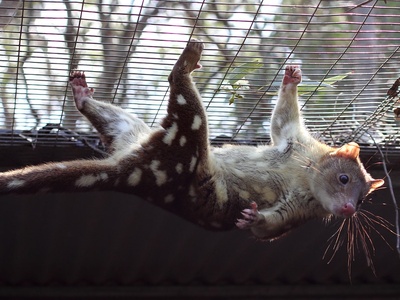
Spotted-tailed quoll
Largest native carnivorous marsupial on mainland Australia; solitary and arboreal predator feeding on mammals and birds. Notable for spotted coat, strong climbing ability and vulnerability from habitat fragmentation and competition with foxes.
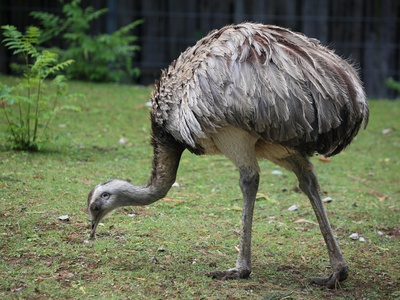
Emu
Large, flightless bird of open country and woodlands, capable of fast running and long-distance movements. Iconic national symbol, notable for seasonal migrations, communal nesting by females and role as an important seed disperser.
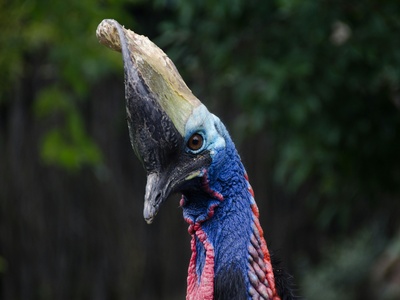
Southern cassowary
Massive forest-dwelling bird with casque and powerful legs, disperses large rainforest seeds. Dangerous if provoked, cassowaries are notable for their role in rainforest ecology and conservation concern from habitat loss.

Laughing kookaburra
Large kingfisher with famous laughing call, sits conspicuously on perches hunting reptiles and insects. Notable cultural presence and role in controlling pests around human habitation.
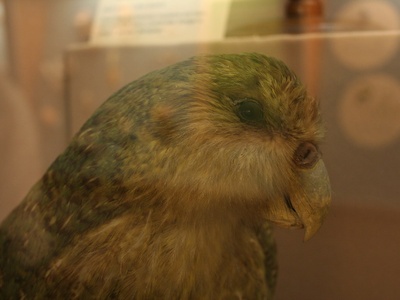
Kakapo
Nocturnal, flightless parrot that nests on ground and feeds on plants and seeds. Critically endangered and subject of intensive conservation; notable for being the world’s heaviest parrot and unique lek-breeding system.

Kea
Intelligent, curious mountain parrot that forages in flocks and manipulates objects. Notable for bold behavior around humans, problem-solving skills and threatened status due to human interactions and introduced predators.
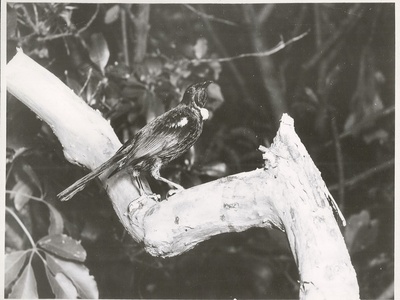
Tūī
Melodious, nectar-feeding songbird with distinctive throat tuft, frequent in forests and gardens. Notable pollinator for native plants and celebrated for complex vocal mimicry and variable, melodious calls.
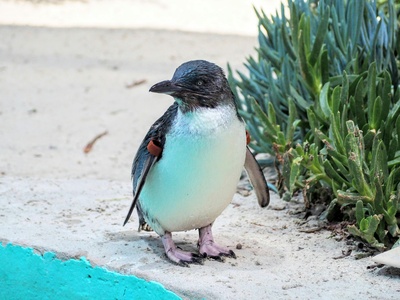
Little penguin
Small coastal penguin that nests in burrows or under vegetation, feeds at sea on small fish and squid. Notable for coastal colonies, nocturnal shore returns, and sensitivity to oil spills and human disturbance.

Australasian gannet
Large plunge-diving seabird that feeds on schooling fish, nesting in dense coastal colonies. Notable for spectacular dives, long migrations and importance for marine ecosystem monitoring.

Australian magpie
Territorial, intelligent songbird common in parks and farmland that sings complex melodies and defends nests vigorously. Notable for cultural prominence, territorial swooping behavior in spring and adaptability to urban environments.

Superb fairywren
Small, colourful insectivorous bird living in scrub and gardens; males show brilliant blue breeding plumage. Notable for cooperative breeding, complex social structure and striking sexual dimorphism during breeding season.

Saltwater crocodile
World’s largest living crocodile inhabiting estuaries, rivers and coastal waters, ambush predator feeding on fish, birds and mammals. Notable for power, longevity and cultural significance alongside human–wildlife conflict concerns.

Freshwater crocodile
Smaller, freshwater specialist that feeds mainly on fish and small vertebrates; shy compared to saltwater crocodile. Notable for inhabiting inland waterways and being of lower risk to humans.
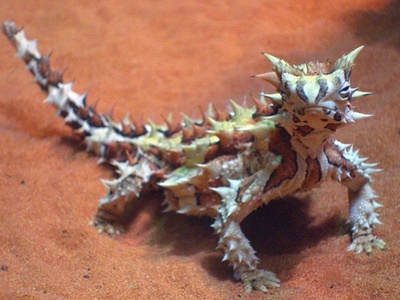
Thorny devil
Slow-moving, ant-eating lizard with spiky armour and water-collecting skin channels. Notable for dramatic camouflage, unique moisture-harvesting adaptation and specialised diet of ants.

Frill-necked lizard
Large arboreal/semi-arboreal lizard that displays an impressive frill to deter predators and during social encounters. Notable for dramatic displays, tree-climbing ability and presence in savanna and woodland habitats.
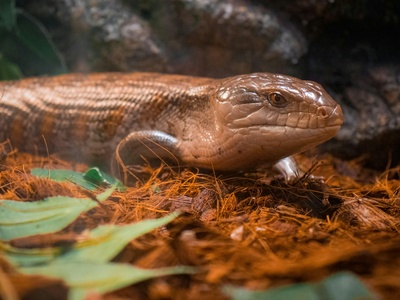
Blue-tongued skink
Thick-bodied ground-dwelling skink with a striking blue tongue used to deter predators; omnivorous diet includes plants and invertebrates. Notable for docile nature and popularity in monitoring reptile health.
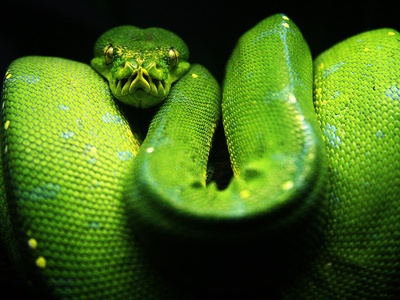
Green tree python
Arboreal constrictor that rests coiled on branches, preying on birds and mammals. Notable for vivid green adult coloration, ambush hunting strategy and importance in rainforest ecosystems.
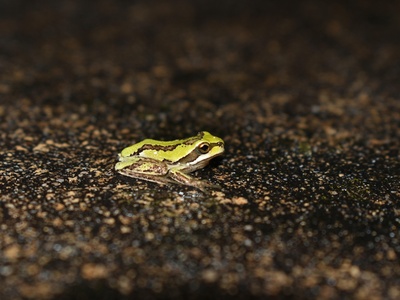
Australian green tree frog
Large, docile tree frog common in urban and natural waterways; eats insects and sometimes small vertebrates. Notable for loud calls, adaptability to human environments and popularity in pet trade (wild populations still widespread).
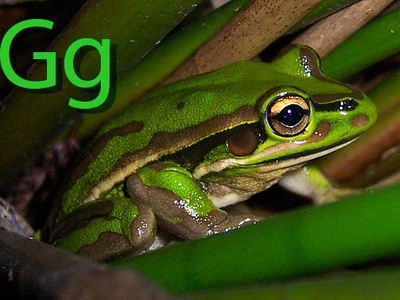
Green and golden bell frog
Once common, now threatened by disease and habitat loss; inhabits ponds and wetlands and breeds in still water. Notable for bright green-and-gold colouring and conservation importance as a vulnerable amphibian.
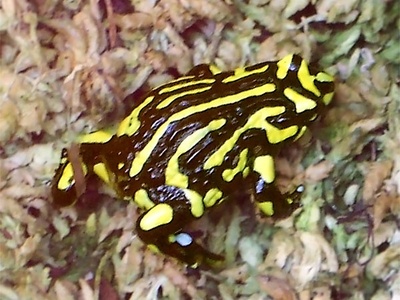
Southern corroboree frog
Tiny, brightly coloured frog with toxic skin alkaloids, breeds in sphagnum bogs. Critically endangered and subject to captive-breeding and reintroduction programs, notable for striking warning colours and rarity.
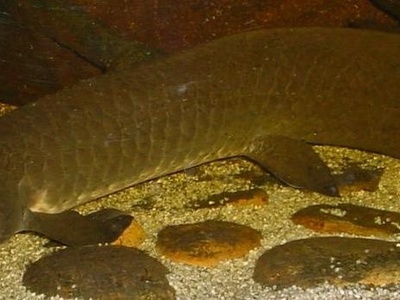
Australian lungfish
Primitive freshwater fish that breathes air with a single lung, inhabits slow rivers and billabongs. Notable as a living fossil with ancient lineage and important for understanding vertebrate evolution.
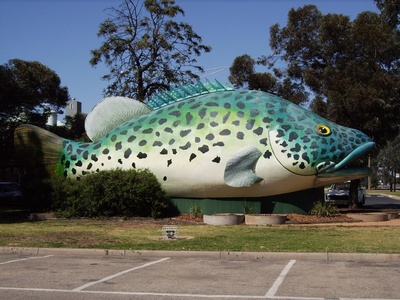
Murray cod
Large freshwater predatory fish important to river ecosystems and recreational fisheries. Notable for long lifespan, cultural importance, and vulnerability to river regulation and habitat degradation.

Great white shark
Apex marine predator known for power and long migrations, feeds on seals, fish and carrion. Notable for conservation and human safety discussions, and for its ecological role in marine food webs.
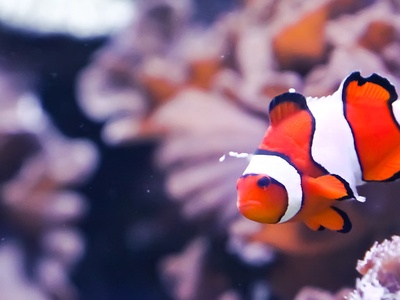
Orange clownfish
Small reef fish living in symbiosis with sea anemones, forming monogamous pairs within hosts. Notable for bright colours, mutualism with anemones and popularity from aquarium trade and reef tourism.
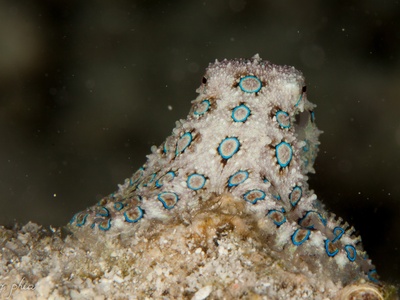
Blue-ringed octopus
Small, highly venomous octopus that displays brilliant blue rings when threatened; lives in rock pools and reef crevices. Notable for potent tetrodotoxin and striking warning coloration despite small size.
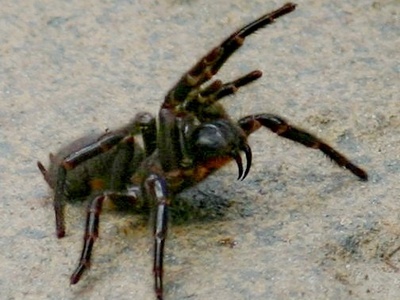
Sydney funnel-web spider
Ground-dwelling mygalomorph spider inhabiting moist forest and urban gardens; bites can be medically significant. Notable for aggressive defence displays, medically important venom and intensive antivenom development history.

Box jellyfish
Highly venomous cubomedusa inhabiting tropical coastal waters and mangroves; delivers painful, potentially fatal stings. Notable for potent venom, translucent cube-shaped bell and seasonal beach warnings where they occur.
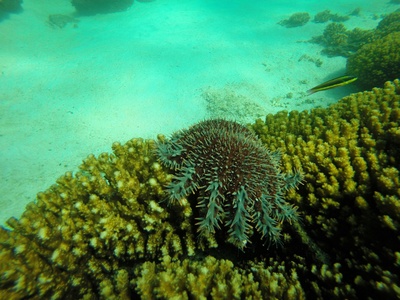
Crown-of-thorns starfish
Large starfish that preys on coral polyps and can cause reef damage during population outbreaks. Notable for significant ecological impact on the Great Barrier Reef and focus of reef management efforts.
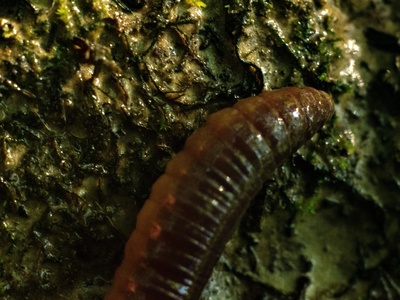
Giant Gippsland earthworm
Exceptionally long subterranean earthworm that inhabits deep, moist soils and aids soil aeration. Notable for extreme size—up to 3 metres—and restricted range, making it a conservation curiosity with specialized habitat needs.
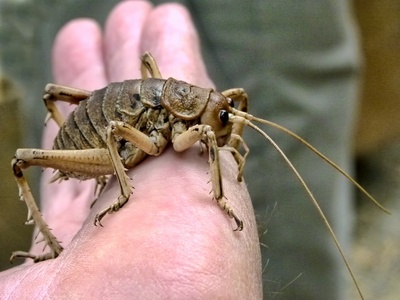
New Zealand giant weta
Large nocturnal orthopteran resembling a giant cricket that feeds on plants and fruits. Notable for its impressive size, endangered island endemism, and role as a flagship insect in New Zealand conservation.

Humpback whale
Large baleen whale famous for acrobatics, complex songs and long migrations between feeding and breeding grounds. Notable for dramatic recovery from historic whaling and popular whale-watching on Australasian coasts.

Southern right whale
Slow-moving baleen whale that calves in sheltered bays, known for surface behavior and callosities on its head. Notable for recovery after whaling and seasonal coastal breeding aggregations important for tourism and conservation.
